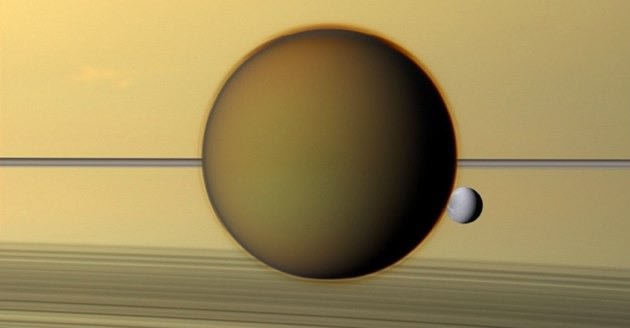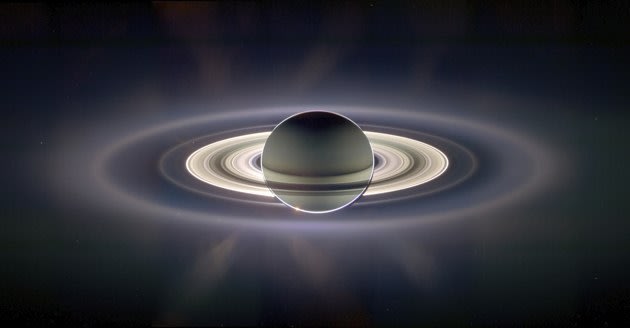Stunning vortex appears on Saturn’s moon, puzzles scientists
By Mike Wehner, Tecca Massive whirlwind could mark the
changing of seasons
Massive whirlwind could mark the
changing of seasons
NASA's Cassini
orbiter has already taken some stunning
photos of Saturn and its
moons, but the latest snapshot from the multi-billion-dollar mission might
be its most impressive yet. After swinging down to the southern hemisphere of
Titan — Saturn's
largest moon — the high-powered orbiter captured images of a massive vortex
forming at its pole, and scientists can only guess as to why it's suddenly
appeared.
The massive collection of swirling gas has
gathered at Titan's south pole, which measures approximately 3,200 miles across.
The whirlwind has never before been spotted, and it remains unclear how long it
has been forming. Cassini — which first arrived near Saturn in 2004 (and shot
the stunning images below) — had been orbiting the moon too far north to have
captured it, until now.
 Photo of Titan against backdrop of
Saturn
Photo of Titan against backdrop of
SaturnPrior to this discovery, the probe spotted images of a large "hood" on Titan's north pole, which researchers believe is the result of cell convection — a process where dense air sinks towards the surface, pushing air at its edges upwards to create clouds. As Titan's seasons change, scientists believe that the same mechanism may be at work at the moon's southern pole, but they can't be sure.
 Cassini photo of
Saturn
Cassini photo of
SaturnA single year on Titan lasts approximately 30 Earth years, making the study of each season a lengthy endeavor. The planet is composed of rock, water ice, and methane, making for some weather formations not typically seen here on Earth. The gigantic, swirling anomaly — which is spinning at four times the speed of the rest of the moon — appears to be yet another interesting characteristic of Saturn's most interesting satellite.
 High-contrast photo of Saturn from Cassini probe
High-contrast photo of Saturn from Cassini probe----------------------------------------------------------------------------------
I'm totally in love with Saturn and think it's a beautiful and mysterious planet. Of course, Earth will always be my very favorite, but as far as planets that we CAN'T live on and favorites, this is my first, with Jupiter being second.
These images are stunning and I can't help but get excited when I see new pictures of our galaxy.

No comments:
Post a Comment